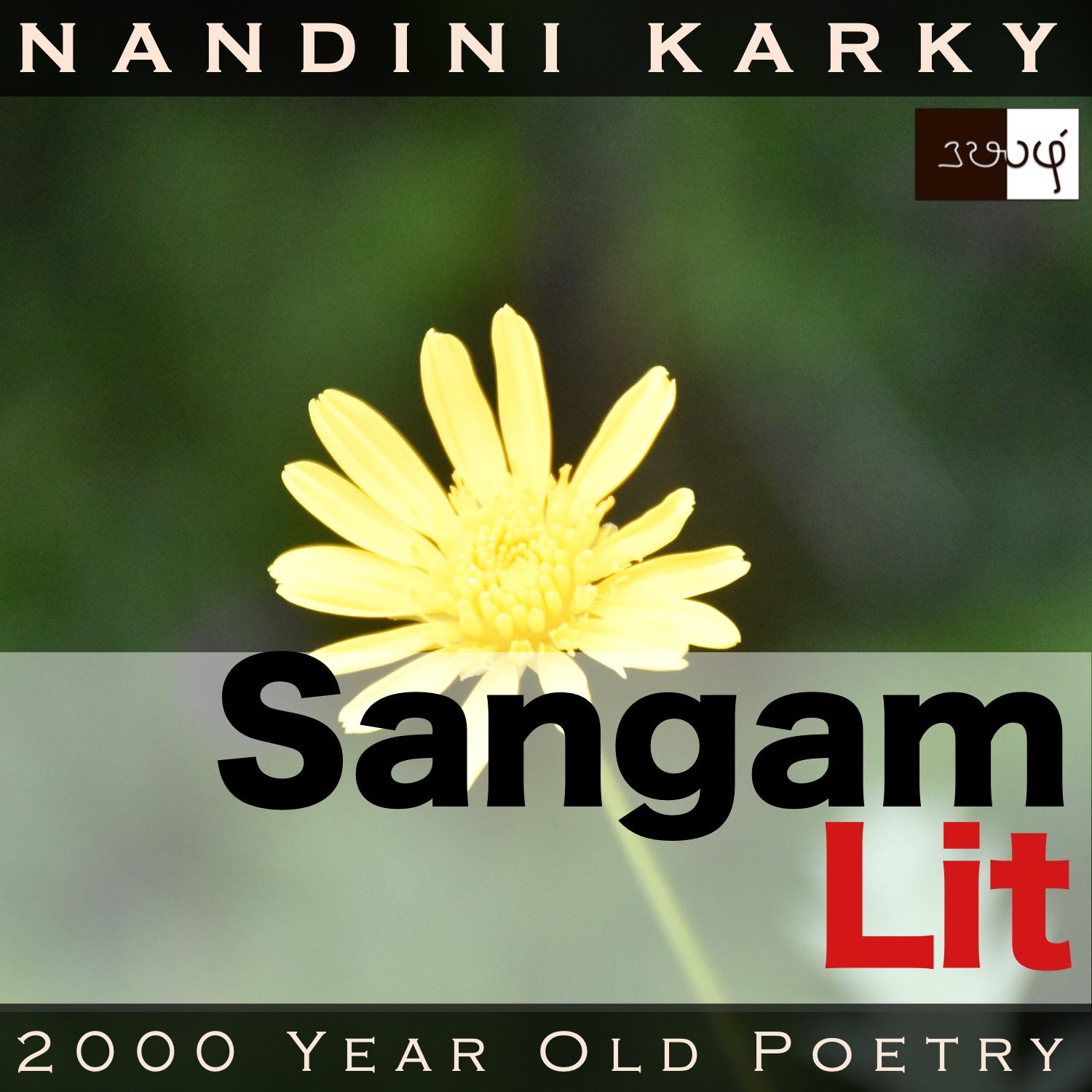Podcast: Play in new window | Download
Subscribe: Apple Podcasts | Spotify | Amazon Music | Android | iHeartRadio | Email | TuneIn | RSS | More

In this episode, we relish picturesque similes, which convey conviction in the heart, as portrayed in Sangam Literary work, Kurunthogai 315, penned by Madurai Velaathathanaar. Set in the mountains of ‘Kurinji’, the verse speaks in the voice of the lady to the confidante, in response to the confidante’s question, as to whether the lady could bear with the man’s parting.
எழுதரு மதியம் கடல் கண்டாஅங்கு
ஒழுகு வெள் அருவி ஓங்கு மலைநாடன்
ஞாயிறு அனையன்-தோழி!-
நெருஞ்சி அனைய என் பெரும் பணைத்தோளே.
‘His wish is my command’ is the hinted theme of this verse. The opening words ‘எழுதரு மதியம்’ meaning ‘the moon rising above’ brings that glowing celestial object that adorns the night sky before our eyes. From the skies, we pounce to the earth along with ‘ஒழுகு வெள் அருவி’ meaning ‘the pouring white waterfalls’. Another celestial object appears in ‘ஞாயிறு அனையன்’ which means ‘he is like the sun’. Ending with the words ‘என் பெரும் பணைத்தோளே’ meaning ‘my arms, akin to thick bamboos’, the verse welcomes us to listen intently.
A grand view in those glimpses of the sun, the moon and the waterfall indeed! The context reveals that the man and lady were leading a love relationship when the man decided that it was time to seek a permanent union with her. Towards that, he intends to part with the lady to gather wealth for their wedding and conveys his decision to the confidante. The confidante goes to the lady and asks if the lady has the strength to bear with the man’s parting. To the confidante’s query, the lady replies, “Akin to seeing the rising moon on the sea’s surface, the gushing white waterfall appears in the soaring mountains of the lord. He is like the sun, my friend, and my thick bamboo-like arms are like ‘nerunji’ flowers.” With these words, the lady assures the confidante that she would bend with joy, to whatever may be the man’s will!
All we heard was talk of orbs in the sky and perhaps a flower too and how does the lady convey her strong message to the confidante. To understand this, we need to follow the lady’s words closely. The lady starts by talking about the moon and its silvery shadow on the dark seas. This delectable image she places in parallel with the waterfalls gushing down the dark hills in the man’s land. After stitching those visually alluring images to describe the man’s land, the lady goes on to talk about the man himself, saying he was like the sun. And finally, she reveals why she calls him the sun – that’s because she and her bamboo arms are like the caltrop or cow thorn flowers.
Why is the lady talking about the sun in connection with the ‘nerunji’ flower? The answer to that lies in a scientific phenomenon named as ‘Heliotropism’, wherein a flower follows the movement of the sun from the east to west by bending its body, relative to the sun’s position in the sky. The most prominent flower exhibiting this behaviour is the striking sunflower, which begins its day by looking to the east and as the sun travels on the sky’s hemisphere, the sun flower too makes sure it’s looking at exactly where the sun is, at every moment of the day, until the sun sets, and then it turns to the east, waiting for the sun to rise again the next day. Returning to our verse, the lady’s words now become crystal clear for she means, as her sun-like man moves, so will she, like the ‘nerunji’ flowers, follow his lead and bend so as to always be in sync with him. What compact creativity to pack the thought of harmony with the another’s plan though the image of a heliotropic flower with its eyes to the sun in the sky!




Share your thoughts...